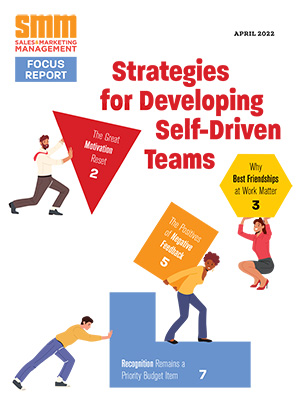Editor’s Note: This is part 2 of a two-part interview between author and consultant Tim Sanders and Matt Dixon, a group leader at CEB and co-author of “The Challenger Sale” and “The Challenger Customer.” You can read part 1 here.
Tim: In “The Challenger Customer,” you talk about how the top performers naturally gravitate to mobilizers. How do these top performers identify and then engage with them? On the flip side, why do the low performers seek the no-influence talkers instead?
Matt: Mobilizers are really just Challenger customers. When you sit down with a high-performing challenger salesperson, they know deep down that the prospects who push back, try to poke holes in what they are there to sell and engage willingly in a debate with them are the kind of customers who can forge consensus.
These top-performing salespeople think, “I have to find my twin on the customer side. I need to find somebody who challenges like I do.” Challengers sell to challengers. They’re looking for their twin because they know that they need that person to carry the baton through that long second stage of the sales process or the purchase process.
By the same token, your relationship builders who are looking to get along with people are looking for their twin on the customer side too. They want somebody who’s likable, generous with their time, and open to dishing the dirt and networking you with colleagues and telling you how things happen. They are looking for friendliness in that conversation. They are looking for the talkers.
When you get down to it, challenger customers are those mobilizers who actually have the skill, the will, the gravitas and credibility to actually get people together around the hard issues and forge consensus around the solution to the business problem. Those talkers can be very valuable if you know who they are and if you can get information from them about who's who, political ebbs and flows, but don't hitch your wagon to them because at the end of the day they're not going to lean in and rock the boat. They may not have the credibility or may be disliked by their colleagues. They don’t have the will at the end of the day to forge consensus around something really tough like a big disruptive solution or disruptive idea.
Tim: In the book, you identify the skeptic as a key mobilizer that salespeople should engage with. How can you tell the difference between the skeptic and the blocker?
Matt: It is a nuance difference, but an important one. Top-performing salespeople understand that somebody who is a skeptic or a debater is poking holes not because they are looking to get rid of you or stick with the status quo. They’re poking holes because they are testing the validity of what you just said.
Of all the mobilizer types, the skeptic scares the average performer. They’ll leave those conversations and they’ll think, “that customer was a real jerk. They didn’t buy what I said.” They'll misconstrue their skeptical kind of approach for being rude or being a blocker when, in fact, all they’re trying to do is pressure test the validity of your idea. Why? Because if they’re going to try to champion it around the organization, they want to feel totally confident that it's stood the test and is a robust enough idea to put in front of colleagues.
A blocker is going to block on almost any new idea because their pushback will become more rooted in talk like, “We're trying to execute on the strategy we articulated last year. We’re trying to implement the system we just bought six months ago. Come talk to us later. “Their pushback is rooted more in adhering to the status quo, not in challenging what you said. They’ll challenge almost any idea.
Tim: In the book you write that thought leadership doesn’t shatter the prospect’s current beliefs, it just reinforces their desired behavior. You go on to explain that to truly challenge, you have to shatter their current beliefs and that’s done through the production and distribution of insight. This has really big implications for marketing at many B2B firms, right? Aren’t they geared to product thought leadership content to establish their credibility and expertise?
Matt: It’s a great question. You’re right to put your finger on what drives people to want to produce thought leadership. The difference between thought leadership and insight is thought leadership is about showing the customer that you're right and your company is smart and you're credible and you're trustworthy. Insight is about showing the customer that they're wrong. That's the thing that's different.
I think it’s probably a bigger challenge for those organizations that are maybe emergent or upstart competitors in the space where they don't have the track record. A lot of that comes from proof points and success stories about how they’ve done this before and they know what they’re talking about. I think that’s a simple kind of clearing a threshold [of credibility].
Most companies are not dealing with that issue, per se. They’re dealing more with how do we get people to pay attention to what they have to say and our advice in the book is, “instead of pouring money into more thought leadership which all sounds the same to what you need to show them is what they’ve missed. More than that, you’ve got to show them how their [strategies] are wrong and the way in which they’re wrong actually ties back into something that you are uniquely positioned to provide.” That’s the difference between an insight and a commercial insight that you can get paid on.
I work more in the financial services industry and this is one of the spaces where thought leadership has run wild. It’s everywhere. Everybody’s got a take on the volatility of the markets right now or the Chinese economy or the European bond market or what have you. It’s all great stuff, but I'd be hard pressed to tell you how one person’s thought leadership whitepaper makes them a better supplier for me than another firm’s thought leadership whitepaper.
As a buyer, I want the company that’s going to tell me what I’ve missed or about something that’s going to blindside me or a big opportunity that other companies are taking advantage of that I'm not.
Tim Sanders is the former Yahoo! chief solutions officer and author of four books, including his most recent DEALSTORMING: The Secret Weapon That Can Solve Your Toughest Sales Challenges.
Matt Dixon, coauthor of THE CHALLENGER CUSTOMER: Selling to the Hidden Influencer Who Can Multiply Your Results and THE CHALLENGER SALE, is the group leader of financial services and customer contact practices at CEB.


